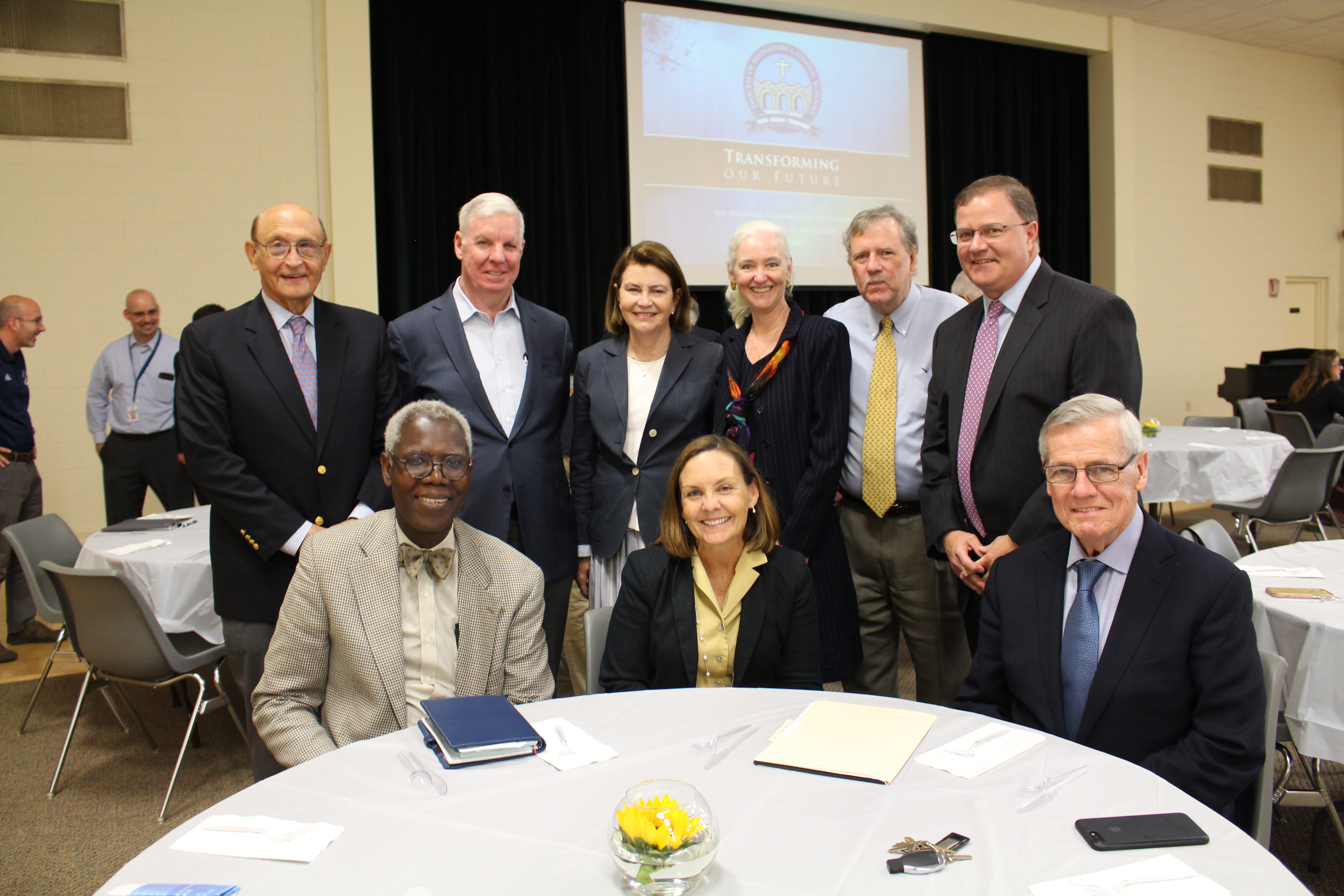Foundations in Education in Support of Catholic Schools’ Strategic Plan
October 10, 2017 | Foundations in Education | Media Mentions
Board members and friends of Foundations in Education attended the unveiling of the new Diocesan Strategic Plan for Catholic Schools, the vision of Bishop Frank Caggiano and Superintendent Dr. Steven Cheeseman, for the future of Catholic Schools and their road map for excellence.
BRIDGEPORT—October 6, 2017 The Diocese unveiled the new Strategic Plan for Catholic Schools today in a meeting attended by 100 school board members, pastors, principals and other educators.
“This is a gigantic leap forward and an historic afternoon in the life of our schools,” said Bishop Frank J. Caggiano, adding that the plan will “re-envision and re-invigorate” Catholic schools in the diocese.
“This is a pivot point for us,” said Superintendent of Catholic Schools Steven Cheeseman. “Now we move from conversation to implementation. This is not just about the viability of our schools, it’s about the vitality.”
The three-year plan prioritizes 16 goals and 80 objectives to renew Catholic identity, sustain and grow academic excellence, improve operations, and support new leadership and governance models.
The Plan grew out of the work of the Diocesan Education Commission, a group of education, business and institutional leaders with a wider range of expertise empaneled by Bishop Caggiano in 2014 to plan for the future of the schools.
Others who contributed to the plan include parents who completed surveys, and principals and teacher who participated in focus groups.
Dr. Cheeseman said that in the coming months his office will be working with principals and schools to formalize a timeline, define actions steps and set benchmarks to measure the success of the plan.
During his slide presentation in the Queen of Saints Hall, Dr. Cheeseman said that Catholic Schools have the opportunity to re-make their own destiny and re-define themselves apart from public schools.
“We’re not interested in becoming public schools with religion class,” he said. “We need to differentiate by promoting our strengths. People talk about the common core. We have one too, it’s Christ, and the faith-based learning community we create.
He said Catholic Schools “form, inform and transform. We change who students are so they in turn can change the world.”
“Catholic Schools have felt the need to chase public schools for too long,” he said. “but we now have the opportunity to be different, not just because we can, but because of who we are.”
Noting that Catholic schools already have excellent academics, Dr. Cheesman said the future is not about “teaching students to take tests or grading teachers.”
“The real challenge for the future is not to improve academic scores, but to improve learning. Many of our students will be working in job not yet created,” he said.
“We not curriculum centered, we’re child centered,” he said, as he walked those in attendance through the Strategic Plan, which calls for personalized instruction and blended learning that emphasizes creative problem solving, respect and collaboration.
Dr. Cheeseman said he will continue to meet with a group of innovative teachers throughout the system to look for creative new approaches to engaging students in learning.
Before rolling out the plan Dr. Cheeseman gave an overview of some of demographic challenges that will see private and public schools competing for fewer young students.
In the past seven years, there has been a 22 percent decline in the age 0-4 population in the state.
Likewise, the state is becoming more secular with a growing number of people who identify as “nones” and profess no religious affiliation. Beyond that, he said family incomes continue to lag making it harder for parents to afford tuition costs.
However, he remains positive about the future of Catholic education and the support it is receiving through the new Foundations in Education which provides scholarship funds for students and innovation grants for teachers.

“The good news is that we do make a difference,” he said,
Catholic school students have much higher Church attendance than those in other schools, an increasing number of vocations to the priesthood and religious life come from Catholic school students.
In his closing remarks Bishop Caggiano thanked members of the Education Commission and said that Catholic schools remains a core mission of the Catholic Church.
“Our schools are a sacred bridge to our parishes, and another authentic community of faith. We will re-evangelize the missing generation through them,” he said.
“I stand before you as the 5th Bishop of Bridgeport and I will do whatever is humanly possible to support excellence in Catholic Schools make the operations viable for generations to come.”
The plan will be formally released to the public on Saturday, the Feast of Our Lady of the Rosary, and will be available in print and online versions.
The diocesan schools system educates more than 9,000 students in 20 elementary schools, five high schools and one school for students with special needs.
To read online visit: http://www.dioceseofbridgeportcatholicschools.com/wp-content/uploads/2017/10/Strategic-Plan-Final.pdf
